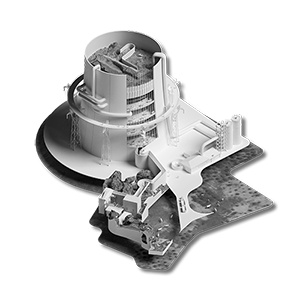Abstract:
The main field of interest of the thesis is based on the concept of memory. Contemporary technological means were utilized as key elements in the design process. The area of interest lies in Kozani’s greater area, in Greece, where PPC’s infrastructure and lignite mines are located. The period of interest is 2030-2050, where the PPC mines are to cease their operation and the area will enter into a post-traumatic period. In the area, it has become a sort of tradition, with the further development of mines, villages to be often relocated to new areas, thus leaving large quantities of material, ultimately turning it into a Contemporary Archeologia. This was both an impetus and the inspiration of this thesis. Architectural design based on the traces left by these villages and also in the material memory they carry along with them.
In the first stage (part 1), the survey of Pontokomi, a village which is to be relocated over the next five years, was realized by using the photogrammetry method with a drone, in order to capture the surface, the urban memory, and seal the memory of the village in a three-dimensional form, forever. The same procedure was applied in the area of the old Kleitos Village, which has been relocated over the last 20 years, where the PPC mines currently operate. Then, in the second part, there is an analysis regarding the characteristics and the mass of the material that is left behind, which is then meant to be used throughout the design process. In the third and last part, the design proposal, the key elements that are driving the design process are the 3d scanned textured surfaces, the available material, and building parts, as well as the traces and projections of the memories of the village. As a final result, the thesis is suggesting the development of a research center, a research camp, whose design and architectural creation is based on the concept of material memory.
This center aims to function as a mechanism for restoring the environmental and social equilibria in the region, during this post-traumatic period. It provides training, experimentation, and application/practice services. More specifically, in the building structures, there are functions such as infrastructure, reception area with a museum space, training/education with classrooms and labs, restoring spaces and accommodation, along with additional infrastructures, that are the driving force of this mechanism. In particular, some mechanisms are: the restoration of the flora (cultivation of varieties thriving in the area), restoration of fauna (where breeding of species existed in the wider region), restoration of the land (where cultivation and intervention in the territory are used as means of fertilization) and finally, Renewable Energy Sources.
Subsequently, the region is lent an invaluable opportunity to a new life; a 3rd Life.
Supervised by: Anastasios Tellios

©
George Vlasis Pakalidis, Copenhagen, 2024
